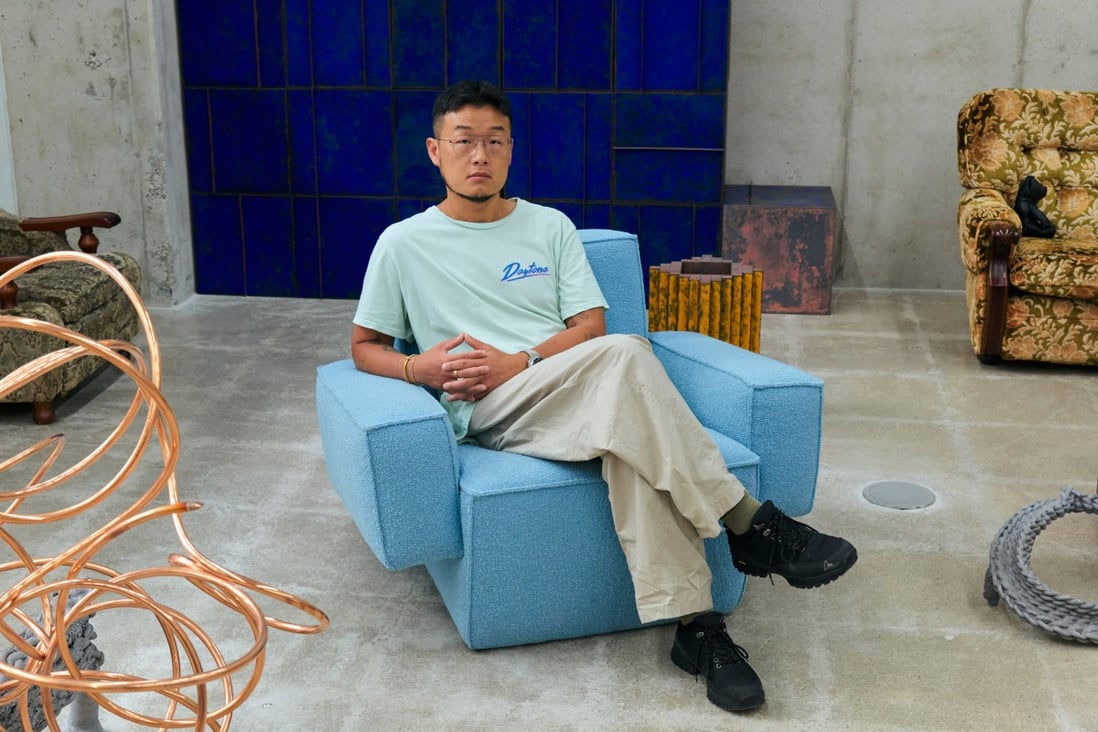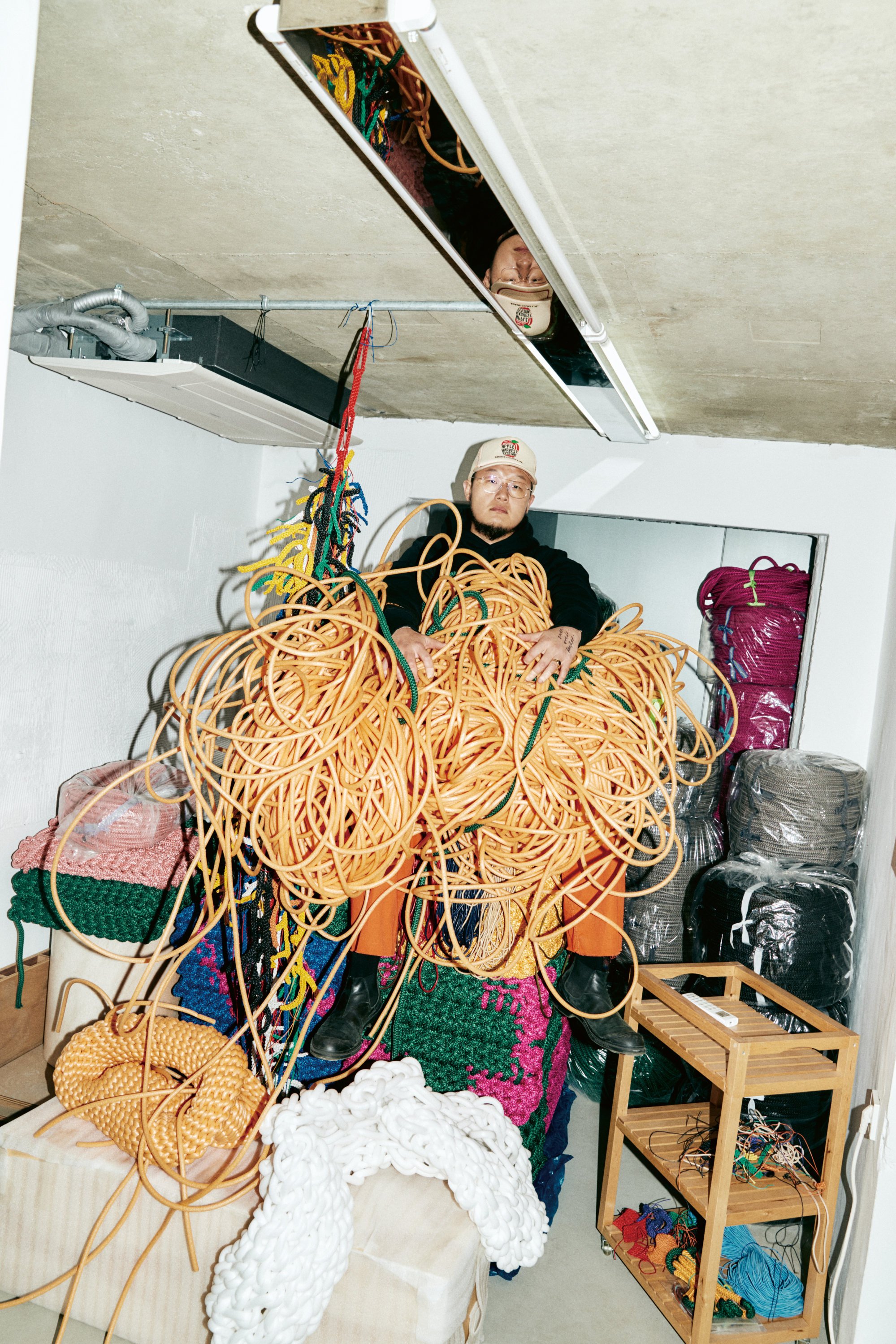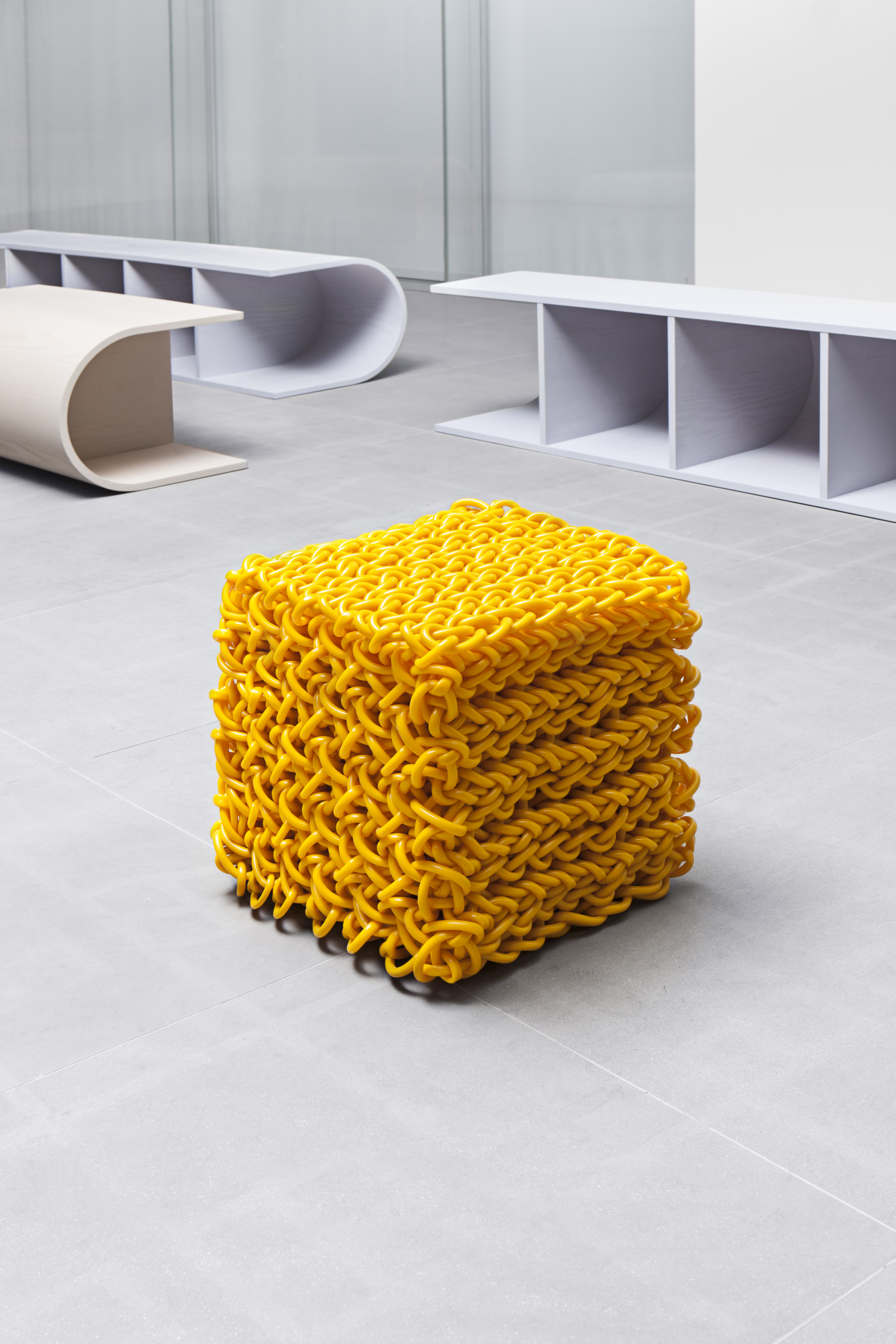
Korean designer Kwangho Lee sits in a lounge chair he made entirely from natural materials - wood, latex foam, cocomat (coconut fibre) and wool. Photo: Jihoon Kang

Artist and designer Kwangho Lee, in his studio.
Channelling the ancient chilbo firing technique used in jewellery making, Lee cut his teeth as a designer hand-crafting fine cherry wood furniture inlaid with jewel-coloured enamelled copper panels. He’s also made lamps from tangled electrical cables, stools from woven garden hosepipes, and a sofa carved from a block of white styrofoam. In a new collaboration with Swedish furniture brand Hem, Seoul-based Lee has created The Hunk lounge chair and Glyph side table made entirely from natural materials – wood, latex foam, cocomat (coconut fibre) and wool.

Lee’s stool made from garden hosepipes.
“I like simplicity within complexity,” Lee tells Bae. “While it doesn’t stand out from far away, the authenticity and the power of the material are felt when you come close.”
Korean architecture is gaining international recognition as well, Bae notes. “In addition, there is an array of young architects who are designing bold and outstanding buildings across Seoul.” Among the 21 creators and 18 “trailblazers” interviewed in the book, many are well-known names. However, Bae says it is filled with insights they’ve never revealed before.
https://www.scmp.com/lifestyle/arts-culture/article/3200344/after-k-pop-k-drama-and-k-fashion
By Peta Tomlinson
